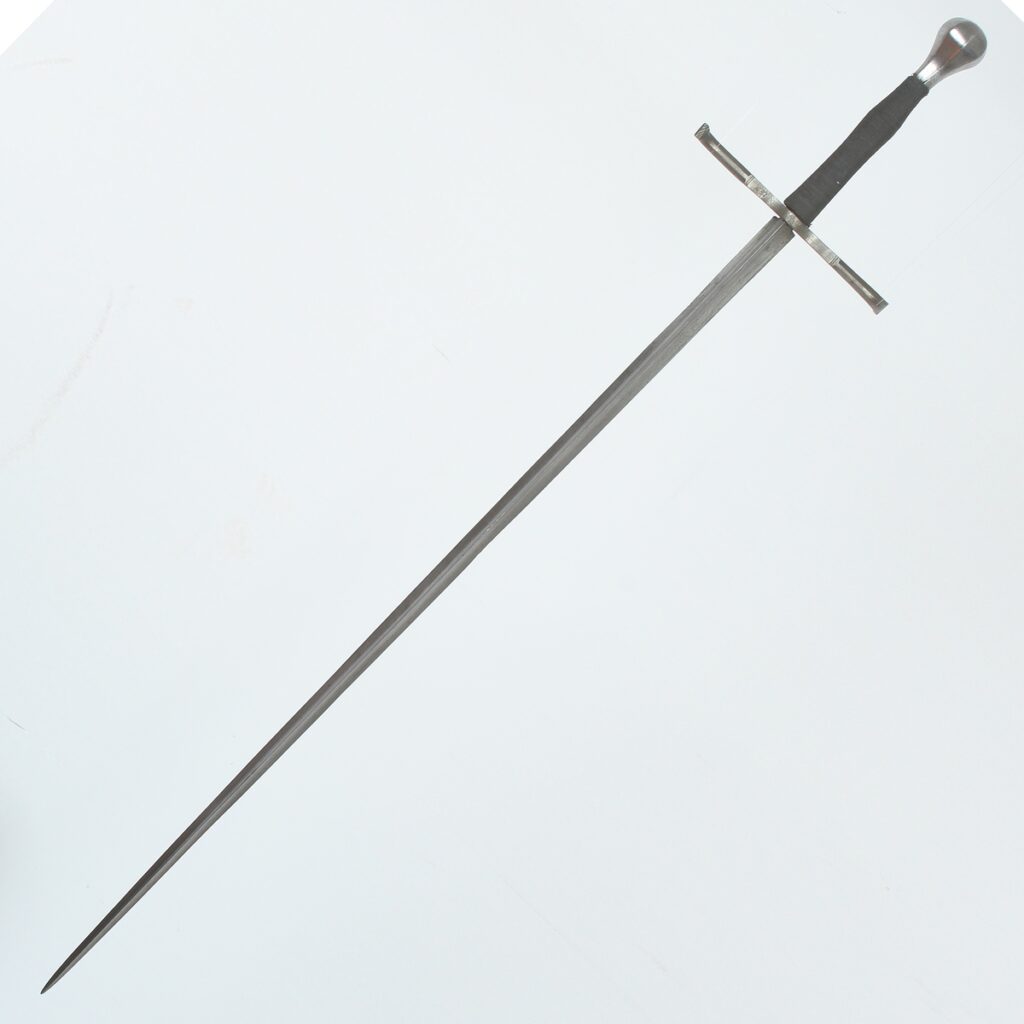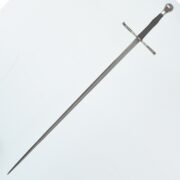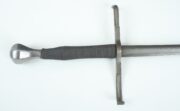
03 Tuck, 1st half of 16th century
Fotogalerie



The history of this type of sword can be traced back to the 14th century. The blade was usually triangular or diamond-shaped. This weapon was used the longest in Eastern Europe, by the armies of the states neighbouring and at war with the Turks. As a result of the warm climate, Turkish warriors exclusively used chain mail through which only the thrusting blade of a tuck, sharpened to a sharp point, could penetrate.
Just like the sword, it is also an evolutionary stage of the thrusting sword. Its blade, sharpened to a very sharp point, combined with the severity of impact, concentrated in one place, to pierce the otherwise secure armour of Ottoman warriors. The tuck was exclusively a cavalry weapon and often replaced the function of the spear, resembling it gradually because of its length (if we add the length of the rider’s outstretched arm). The length of the tuck also allowed the horseman to finish off an opponent who had been thrown from the horse to the ground. In Poland, the tuck was used until the 18th century as a heavy cavalry weapon. It was also part of the armaments of some specialists among the Austrian hussars.
Length 1 185 mm, blade length 955 mm, blade width 25 mm, weight 1 484 g.
.
Aktuálně

Vyšlo čtvrté letošní číslo Historie a vojenství s hlavní studií o československém důstojníkovi vojenské zpravodajské služby OBZ Adolfu Püchlerovi

Poděkování za službu: Vojáci z misí po celém světě převzali ocenění na pražském Vítkově

Ve čtvrtek 27. listopadu v Armádním muzeu promítneme filmy z naší sbírky. Přijďte se podívat na díla později známých filmařů

Katastrofa lodi Patria 25. listopadu 1940








